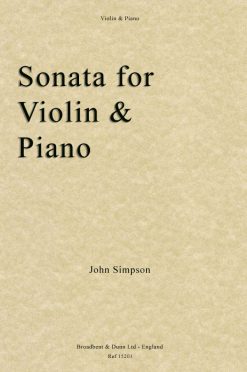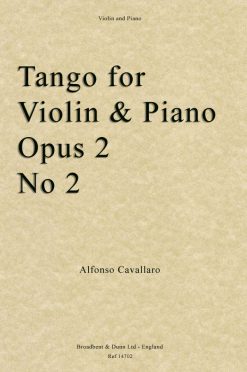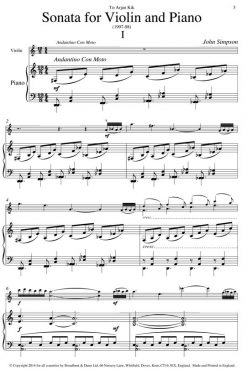£8.95
Piece Description
Additional information
| Media | |
|---|---|
| Composer | |
| Instrumentation | |
| Difficulty | |
| Series |
Biography
Biography
Cavallaro, Lenny
Lenny Cavallaro (born 1947) notes with some wry amusement that the top four names on Anthony Tommasini’s list of 'Top 10 Composers were Bach, Beethoven, Mozart, and Schubert. These men, he asserts, are his gods, and the geniuses whose works he seeks to emulate. The result, not surprisingly, is that most of Cavallaro’s music sounds as though it was written between 1720 and 1830. Lenny has been called "the reactionary neoclassicist", and one critic went so far as to call him "a throwback to Schubert".
Cavallaro has written two sonatas in the baroque style (for violin and piano or harpsichord, and oboe and clavier), a keyboard partita, an organ fugue, and some contrapuntal chamber music. He has written two piano sonatas in the classical style, Songs Without Words loosely modeled after Mendelssohn, and a number of more Romantic works closer to Schubert in spirit.
Cavallaro, an accomplished pianist, was a top prizewinner in the J.S. Bach International Competition for Pianists and subsequently played that composer's Six Partitas to the highest critical acclaim in Carnegie Recital Hall. He earned a Doctor of Musical Arts degree from West Virginia University. Additionally a man of letters, he served for nine years as music critic for the New Haven Register and is author or co-author of six books. He edited and revised Paganini's Fire, a novel based on the life of that legendary violinist by Ann Abelson, released in November 2011 by Stay Thirsty Press. He teaches English at Northern Essex Community College. Finally, Cavallaro is also a therapist practicing hypnosis, hyperempiria, and other healing arts. See http://www.lennycavallaromusic.com

Related products
Violin & Piano
Violin & Piano
Violin & Piano
Alfonso Cavallaro – Serenade for Violin and Piano Opus Posth. 2 No 1 – Digital Download
 Beethoven - Egmont Overture, Opus 84 (Horn Octet & Tuba) - Score Digital Download
Beethoven - Egmont Overture, Opus 84 (Horn Octet & Tuba) - Score Digital Download  Beethoven - Egmont Overture, Opus 84 (Horn Octet & Tuba) - Parts Digital Download
Beethoven - Egmont Overture, Opus 84 (Horn Octet & Tuba) - Parts Digital Download 







